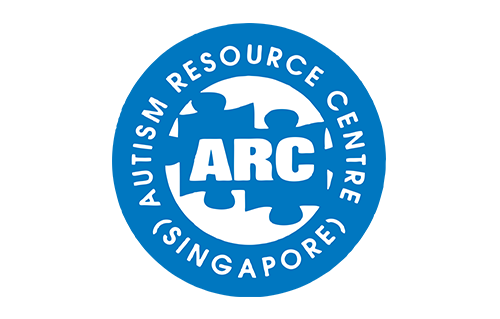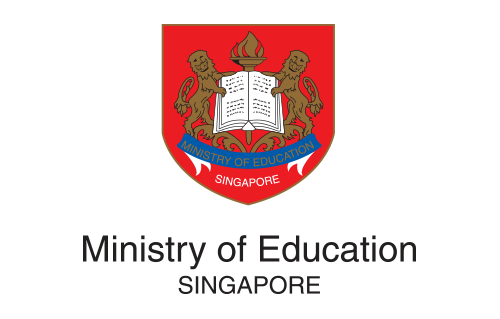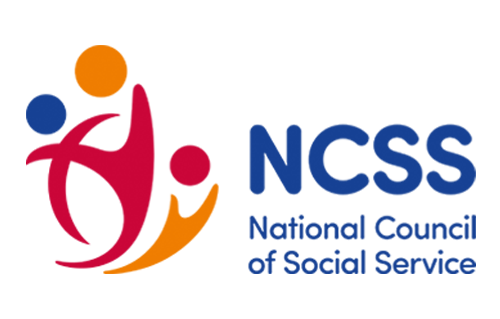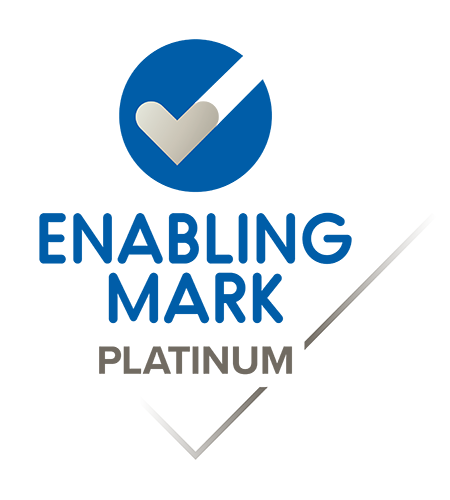Admissions
What is Pathlight's admission criteria?
The end in mind of our admission criteria and process is to ensure that those who are offered a place at Pathlight are right-sited to benefit from our school's programme. Please refer to our website for more information on our Admission criteria here.
What do you mean by "if the child can access the curriculum"?
Please elaborate.
This means that your child has both:
- the cognitive and verbal abilities to handle the national curriculum
- the ability to function in a classroom environment and does not have the level of sensory integration/behavioural/ psychological issues that would impede his/her ability to attend to classroom and individual instruction.
How is the intake of students for the school determined?
How many vacancies are there for the Primary 1 cohort?
We are guided by decisions that are student-centric and based on the right siting to ensure that every child who comes to Pathlight will benefit from our school programme. It is thus not meaningful to talk about numbers.
All children have to meet a suitability assessment for intake into the school. Please note that the school screening assessment does not automatically guarantee the child a place in Pathlight.
Admission will still depend on various factors such as:
- fulfilment of stipulated admission criteria
- the outcome of the school screen assessment by Pathlight's psychologists and educators
- review by Admissions & Review Committee
- availability of sufficient physical & teaching resources, class suitability
- overall school capacity.
Will non-verbal kids be eligible for the school?
Children who are expressively non-verbal will not be excluded from Pathlight School as long as they meet the other admission criteria. In particular, children need to have receptive language understanding that allows them to access the national curriculum.
Does the Autism Resource Centre or Pathlight School provide diagnosis or assessment services?
We did an assessment 2 years ago, would that be valid?
No, Autism Resource Centre (ARC) and Pathlight School do not provide diagnosis or assessment services. Parents/guardians may obtain the relevant reports from any medical professional or psychologist (available at KKH, NUH or private medical professionals).
Please note that psychological reports have a validity period of 2 years from the date of assessment, as children’s cognitive abilities will change/develop over time. If the assessment was done less than 2 years ago and contains the relevant information required, the child may not have to undergo another assessment by a psychologist. But if the report was done more than two years ago, you would need to obtain an updated report.
How do you assess whether a child goes into General Education or Pathlight School?
The child can undergo a School Readiness Assessment with any medical professional or psychologist at KKH, NUH or private medical institutions. In this assessment, it will reflect the child's readiness to learn (anxiety management, self-modulation, motivation, etc.), level of functional communication, work habits, and cognitive and social skills. Recommendations will be made depending on the outcome of the assessment.
Can I apply to both General Education schools and Pathlight?
You are advised to apply only to 1 school.
According to MOE, children with moderate-to-severe special educational needs or who have higher support needs should apply to a Special Education (SPED) school. Children who have applied to SPED schools do not need to participate in the annual MOE P1 registration exercise.
If you apply/have applied to both Pathlight and a General Education school, you have to give up your child's place in the registered General Education school when you accept our offer of a place in Pathlight. No child can be registered in 2 schools.
We wish to highlight that our School Screening Assessment is to assess your child's suitability for Pathlight (based on our Pathlight school setting, autism-friendly pedagogies etc) Our offer of a place in Pathlight should NOT be taken as confirmation that your child is suitable for General Education schools.
Can I let my child attend a General Education school first, and if he/she is not able to cope, can I apply to Pathlight School then?
What is the application process like? How else can he/she be supported?
According to MOE, children with moderate-to-severe special educational needs or who have higher support needs should apply to Special Education (SPED) schools, where their learning needs could be better supported.
Should you place your child in a General Education school and decide to apply to Pathlight School thereafter, please approach your child's General Education school to apply. Pathlight will not be able to receive direct applications from parents if your child is currently in a General Education school.
There are other programmes provided at ARC to support students on the autism spectrum in General Education schools. For more information, please refer to ARC(S)’s website.
What is the School Screening Assessment?
What will my child do during this assessment?
The end in mind of our admission process is to ensure that those who are offered a place at Pathlight are right-sited to benefit from our school’s programme. Please refer to our website for more information on our Admission Criteria.
The School Screening Assessment (SSA) provides additional information to us to better understand each applicant’s learning profile and support needs in a group learning environment. During the session, applicants will have the opportunity to engage in common classroom activities, including individual and group activities. This may involve paper-and-pencil tasks, working with manipulatives, as well as group chats and games.
We wish to remind parents that being invited for the School Screening Assessment DOES NOT automatically grant your child a place in Pathlight. Observations from the SSA will be evaluated alongside data provided by your child’s school, psychologists and other documents in the application pack to determine if he/she is suitable for Pathlight’s programme.
Admission will also depend on various factors, which include the availability of sufficient physical and teaching resources, class suitability and overall school capacity.
What happens to my child's application if it is unsuccessful?
MOE has set up the Multi-Agency Advisory Panel (MAAP) to provide a more seamless process for admission into SPED schools. This panel comprises specialists and professionals from the Ministry of Education, the National Council of Social Service, the Ministry of Health and the SPED schools.
Applicants who are assessed to be not suitable for the 1st choice school will automatically be referred to MAAP. The panel will review the learning profiles of the applicants and recommend alternate school placement options for parents’ consideration. Parents are advised to list their 2nd and 3rd choice schools as these will be taken into consideration by the panel when recommending alternate school placements for applicants.
Parents will receive a letter on the outcome of your child’s application to Pathlight School and the alternative school(s) recommended by MAAP. Representatives from the recommended alternative school/s will contact parents to follow up.
If my child's application is unsuccessful, how long will I have to wait till I can apply to Pathlight School again?
Parents can reapply to Pathlight School at any time. It will be important to provide updated information for your child's school and any professionals working with him/her to support the application. For cognitive assessments, do note that the reports are valid for 2 years, and your child should not be reassessed within one year of his/her latest assessment.
Can I transfer my child/ward to a General Education school after a few years in Pathlight?
Parents/guardians should first consider if their child/ward is ready to transfer to a General Education school.
Once parents have decided, you may approach your child/ward’s form teachers to indicate your intention. To ensure right-siting, the Ministry of Education will come in to assess if your child can be supported in a General Education school setting. They will work with parents on the application and with the receiving General Education school. If the student is assessed to be ready and the General Education school has a suitable vacancy, parents will be informed, and the transfer will be effected.
Curriculum
How is Pathlight different from General Education schools?
At Pathlight, our mission is to maximise the potential of every student in both academics and life skills. Thus, the School provides a holistic curriculum, comprising a unique blend of national curriculum academics and life readiness skills for students on the autism spectrum and related conditions.
Other unique features include:
- All lessons are taught using autism-friendly pedagogy.
- Small classroom size with structured group learning environments.
- Strong on-site support from autism therapists.
- Assessments and reports for access arrangements for national examinations.
- School Partnerships for all Secondary level students to promote integration and prepare them for a smoother transition to the Institutes of Higher Learning.
- Value-added signature programmes such as the Digital Academy to equip students with 21st-century skills, the Dance Talent Development Programme and the Artist Development Programme to develop unique talents.
Please refer here for more details on our curriculum.
What is the difference between Primary 1 Foundation and Primary 1 Standard?
Can I choose for my child to be placed in the Primary 1 Foundation programme?
At the School Screening Assessment, the Admissions & Review Committee will assess and make the recommendation as follows:
- If our school programme is suitable for your child
- If suitable, then which programme (Primary 1 Foundation or Primary 1 Standard) will benefit your child
The academic content of Pathlight's Primary 1 Standard and Primary 1 Foundation are similar to the national Primary 1 curriculum. Both programmes provide a blend of academic and non-academic life readiness skills.
In the Standard programme, the content is covered at a similar pace as in a General Education school.
In the Foundation Programme, the Primary 1 and Primary 2 syllabus will be covered in 3 years instead of 2.
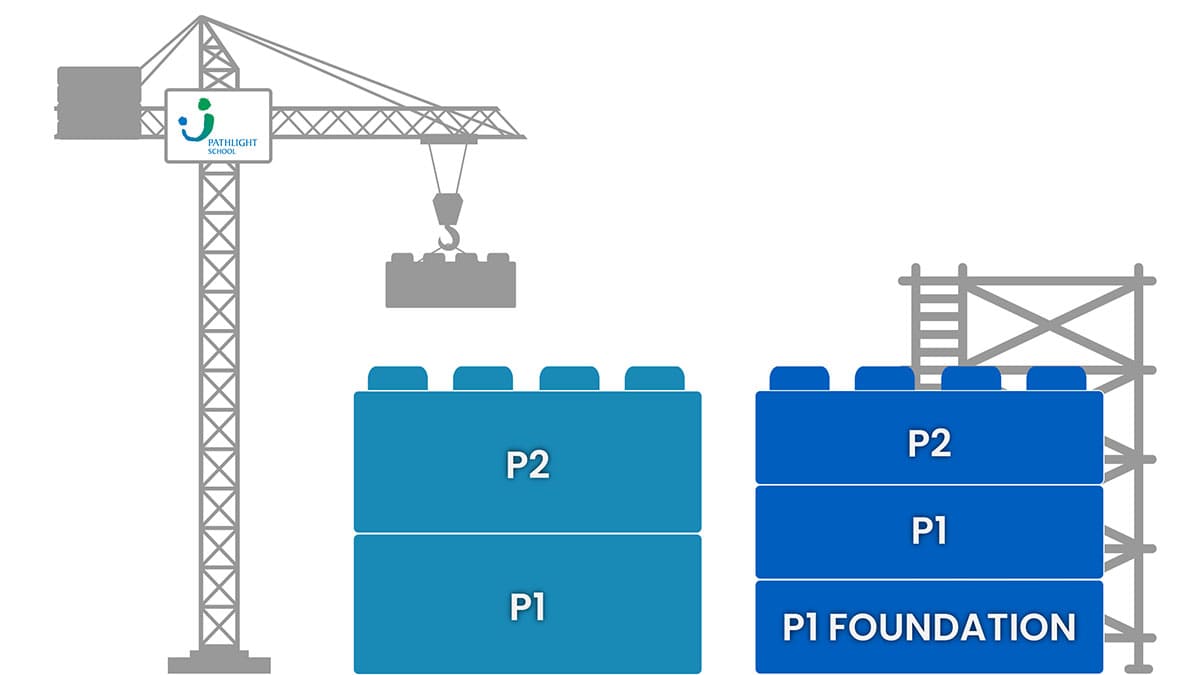
The additional time taken to complete the Primary 1 and 2 content in the Primary 1 Foundation Programme allows for:
- More EXPLICIT and INTENTIONAL teaching of content vocabulary;
- STRUCTURED SCAFFOLDING through the breakdown of content into bite-sized portions for easier learning;
- More time for REPEATED PRACTICE to reinforce understanding and mastery of foundational skills;
- More opportunities to strengthen and develop the ability to learn at the pace of a group.
Will my child be exempt from having to take Mother Tongue Language (MTL)?
Why is MTL not offered in Pathlight School?
All Pathlight students are exempted from taking Mother Tongue Language (MTL) as a subject.
The school applied for a blanket exemption for our students based on the following grounds:
- Language is not a strength for most students on the autism spectrum.
- The MTL exemption frees up white space for us to focus on our life readiness curriculum, such as:
- Daily Living Skills
- Social-Emotional Management
- IT Skills
- Gym
Please click here to find out more about the assignment of Achievement Level (AL) score for MTL exemption at PSLE.
Can I register my child to take Mother Tongue Language (MTL) at PSLE or GCE 'O' or ‘N’ Levels/ Secondary Education Certificate (SEC) examinations?
As Pathlight does not offer MTL as a subject in our programme, parents who are interested in having their child take MTL at the national examinations would need to take full responsibility to support their child’s learning in MTL and to keep updated with the latest MTL curriculum.
Parents can approach the School to express their intention for their child to take MTL at the national examinations, latest by Primary 4. The School will assist in registering their child for MTL national examinations and applying for access arrangements.
For parents who wish to learn how the Achievement Level (AL) score is assigned for Mother Tongue Language (MTL) exemption, please view the MOE PSLE Scoring System.
Will my child be eventually taking PSLE or GCE 'O' or ‘N’ Levels (until 2026)/Secondary Education Certificate Examinations (from 2027)?
Does Pathlight offer the Secondary School curriculum?
Yes, Pathlight offers the same national Primary and Secondary School academic curriculum, except without Mother Tongue Language*. Taking the Mother Tongue at PSLE or the GCE 'O' or ‘N’ levels (until 2026)/Secondary Education Certificate (SEC) (from 2027) is certainly an option that is open to students.
Will there be homework and examinations?
Yes. As the School follows the national curriculum, homework and assignments are essential in helping a child learn, as well as evaluating a child’s learning progress. As you may be aware, MOE has done away with some year-end examinations. The focus is on enhancing the joy of learning and not rote learning. Pathlight is fully aligned with the strategic direction of MOE for schools. However, we have to retain examinations for some levels.
This is so that our students have more opportunities for timed practice. It also serves as a platform for teachers to take note of students' test-taking behaviours to collect evidence-based data to apply for access arrangements for national examinations. Examples of access arrangements could be having a familiar face preside over the exams.
Parents/guardians are strongly encouraged to work closely with the school to manage and monitor their child/ward’s progress in this aspect.
What are some of the integration programmes that Pathlight School has with General Education schools?
Pathlight's Secondary School has school partnerships with General Education secondary schools, which are based on the approach of '4 Levels of Integration' – Physical, Social, Academic and Professional.
It is a scalable, sustainable 'Best of Both Worlds' education model that is formally endorsed by MOE. It is an inclusion model where our secondary students and teachers attend school at the General Education partner schools daily and interact socially with their students during recess and selected school events/classes.
This partnership provides for purposeful integration and allows our students to apply classroom learning of social skills to the real world. At the same time, it also contributes to building awareness of people on the autism spectrum among the general community and towards a more inclusive society. For more details on our school partnerships, please visit our Secondary School page.
How flexible can the curriculum be to meet the diverse needs of each child?
Individualisation of the curriculum will occur through the Individual Education Plan (IEP) or Individual Transition Plan (ITP) process, with inputs from the teaching staff and autism consultants.
This plan is compiled during the first term in school and builds upon the information gathered during the admissions assessment. The plan covers all aspects of the curriculum, including both academic and non-academic learning. Parents will be invited to be fully involved in the process.
The delivery of the goals contained in the plan is carried out by the class teachers in their weekly teaching plans. Family and caregivers are also actively encouraged to reinforce the lessons taught, including life skills and communication programmes, to assist the student in achieving the goals.
Will technical subjects be included in the curriculum, so that the student is trained for a specific job?
Students in the Vocational Track will take functional academics and vocational core, and electives. For those who are able, they will be assessed for suitability for nationally certifiable courses and be trained accordingly. These certifications will involve work exposure and attachment,s too.
Secondary School students will be exposed to programmes such as industry visits and internships to prepare them for a smoother transition to Institutes of Higher Learning (IHLs) or the workplace.
What are the Co-Curricular Activities (CCAs) available?
The school offers a range of CCAs from sports clubs to interest groups and the performing arts.
CCAs are introduced to students starting from Primary 4. These programmes are carefully selected for students based on the following 4 dimensions: Cognitive & Intellectual, Physical, Socio-Emotional and Contribution to Others.
All CCAs are conducted by qualified and specialised professionals who have undergone autism strategies training. Please refer to our webpage for the list of CCAs offered.
School Matters
What are the school hours?
Is it a single-session school?
We are a single-session school. Our official school hours are from 7.50 am to 1.00 pm for Primary School and 7.50 am – 2.00 pm for Secondary School and Vocational Track.
What is the typical class size in Pathlight?
Our typical class size in Primary School is 10 to 14 students with 1 teacher and 1 teacher-aide. This will vary according to the needs, ability and learning profiles of the students.
How much is Pathlight’s school fees?
For information on our school fees, please refer to our website here.
Are there school fees subsidies available?
Yes, school fees subsidies are available. No student, if deemed suitable for Pathlight, will be deprived of an education because he/she cannot afford it. Please refer to our webpage for more information on our school fees subsidy. More details on the school fees subsidy application will be provided upon offer.
Does the school have a school bus service for students?
Yes, the school has an outsourced school bus operator that is able to serve island-wide. The bus operator will get in touch with parents during registration.
Is there an after-school care service in Pathlight School?
Pathlight does not offer after-school care services. Parents would have to make their own arrangements.
Does the school offer therapy services?
Should I continue with my external therapy sessions when my child joins Pathlight?
Pathlight follows a school model and not a therapy model. We have a team of on-site therapists who work closely with our educators to support students in accessing learning. This team also develops school-wide programmes and supports.
Students who have specific therapy needs should continue with their external therapy sessions.
How are the students distributed across the different Pathlight Schools?
Our current school population stands at more than 2000 students.
The cohort distribution for 2025 is as follows:
| Cohort Distribution for 2025 | |
|---|---|
| Pathlight School (Tampines) | Primary 1 to 4 |
| Pathlight School (Ang Mo Kio Campus 1) | Primary 1 and 2 Vocational Track |
| Pathlight School (Ang Mo Kio Campus 2) | Primary 3 to Primary 6 Secondary School |
This distribution is based on school deployment needs and better utilisation of the physical space in our schools.
Secondary school students attend lessons at our school partners daily, as part of our School Partnerships to promote integration. Our three school partners are: Mayflower Secondary School, Peirce Secondary School and Yio Chu Kang Secondary School.
More information on our School Partnerships can be found on our webpage.
What is the 'composite/make up' of the classes? How do you group the students?
Students will be grouped according to their learning profiles and needs in both academic and non-academic areas.
The School caters to students aged 7 to 18 years old. What happens to the student after that?
Our Academic Track programme offers the national curriculum from Primary 1 to Secondary 4/5. Upon graduation with their PSLE, GCE N or O Levels (until 2026)/Secondary Education Certificate (SEC) examinations (from 2027), students will have the opportunity to be integrated back into General Education Secondary School or Institutes of Higher Learning (IHLs) such as Junior Colleges, Polytechnics, Arts & Design Schools like LaSalle, Nanyang Academy of Fine Arts (NAFA) and Institutes of Technical Education (ITE).
On average, more than 90% of our students who take PSLE are eligible to progress to Secondary School, and 100% of our Secondary School students who take their GCE ‘N’ and ‘O’ Level exams are eligible to progress to Institutes of Higher Learning.
Our Vocational Track programme offers functional academics together with vocational training for students who are better suited to a vocational curriculum. The goal is to prepare them to function as independently as they can and equip them with employable skills. Upon graduation, we hope that these students will be able to find employment in either a sheltered, supported or open employment.
Teachers
Where are the teachers from?
What are their qualifications, and what kind of training will they undergo?
The teachers selected for the school have all undergone a professionally designed series of assessment tests for aptitude, attitude and abilities. Teachers are expected to have formal qualifications in either the national curriculum or the special education stream. The Autism Resource Centre (S) will undertake the intensive training required of the teachers.
Will the teachers be able to keep up with the demands of the national curriculum, as well as teaching other skills unique to autism?
As our philosophy is in providing equal emphasis on both academic and skills needed by the student to be independent in life (and this includes preparing them for jobs), our teachers will be equipped to manage the demands of the academic curriculum as well as the other life skills necessary for our students.



